Viaggio nel tempo: Amalfi
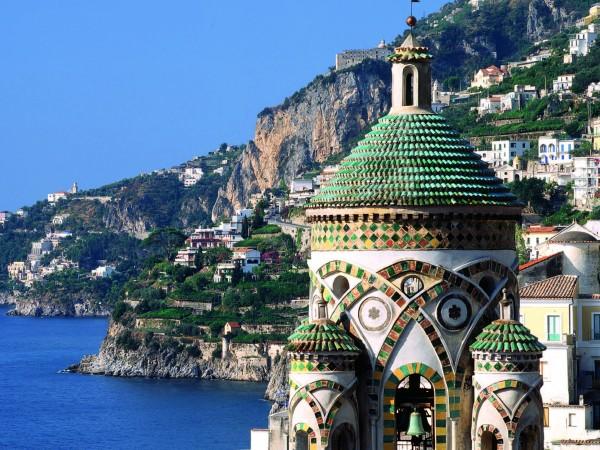
Prima di iniziare l’esplorazione per i vicoli e le architetture di Amalfi voglio deliziarvi di alcuni cenni storici. Amalfi è stata, tra il IX e il XII secolo, la più importante e potente potenza marittima del Mediterraneo, fregiandosi del titolo di Repubblica e Granducato, surclassando di gran lunga le altre più blasonate rivali, Venezia, Genova e Pisa. Disponeva di moneta propria, chiamata Tarì che veniva scambiata nei principali banchi di monete fiorentine e senesi. Famosa anche per aver emanato un codice marittimo di 66 leggi, dette Tavole Amalfitane, delle quali alcune ancora utilizzate nella navigazione odierna.
Partiamo da Piazza Flavio Gioia, capolinea della maggiore parte degli autobus provenienti da Salerno e altre località della Costiera Amalfitana e Sorrentina e del molo turistico denominato ‘Pennello‘ 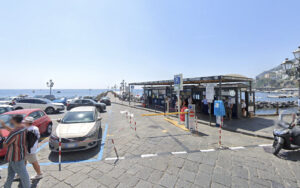 a cui, da primavera a fine estate, è possibile fare scalo dai principali porti di Salerno o Sorrento nonché dai moli turistici delle altre cittadine della penisola. La piazza è sempre stata il centro nevralgico dell’attività cittadina, considerando che nei secoli essa era più una banchina per l’attracco delle imbarcazioni e il porto marittimo dello scambio di merci prima che fosse sollevata dalla spiaggia limitrofa, infatti, notiamo subito due accessi alla centrale Piazza Duomo: l’accesso principale su Via Duca Mansone I e sul lato sinistro, sormontata da un portico, la
a cui, da primavera a fine estate, è possibile fare scalo dai principali porti di Salerno o Sorrento nonché dai moli turistici delle altre cittadine della penisola. La piazza è sempre stata il centro nevralgico dell’attività cittadina, considerando che nei secoli essa era più una banchina per l’attracco delle imbarcazioni e il porto marittimo dello scambio di merci prima che fosse sollevata dalla spiaggia limitrofa, infatti, notiamo subito due accessi alla centrale Piazza Duomo: l’accesso principale su Via Duca Mansone I e sul lato sinistro, sormontata da un portico, la 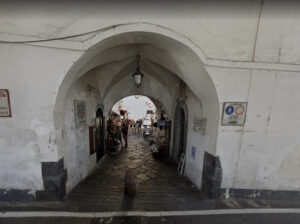 ‘Porta della Marina’, strategico vicolo laterale un tempo usato per lo scarico delle merci da trasportare al centro città e per il tiraggio in secca dei natanti. Al centro di Piazza Flavio Gioia sorge una fontana con la omonima statua
‘Porta della Marina’, strategico vicolo laterale un tempo usato per lo scarico delle merci da trasportare al centro città e per il tiraggio in secca dei natanti. Al centro di Piazza Flavio Gioia sorge una fontana con la omonima statua 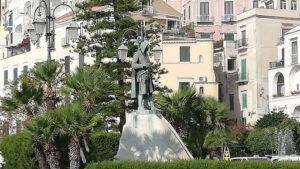 del navigatore amalfitano a cui è dedicata che, secondo le cronache dei tempi, perfezionò la bussola magnetica. Sul lato della Porta della Marina si aprono gli
del navigatore amalfitano a cui è dedicata che, secondo le cronache dei tempi, perfezionò la bussola magnetica. Sul lato della Porta della Marina si aprono gli 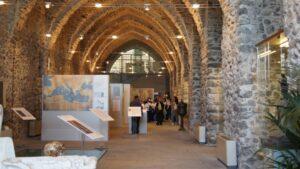 Arsenali della Repubblica, originariamente adibiti a cantiere navale della città, oggi principale Museo cittadino, assolutamente da non perdere.
Arsenali della Repubblica, originariamente adibiti a cantiere navale della città, oggi principale Museo cittadino, assolutamente da non perdere.
Piazza Duomo e la Cattedrale
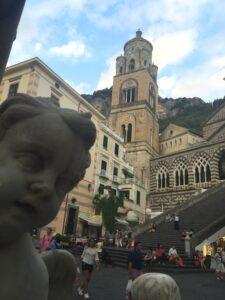
Lasciamoci la statua di Flavio Gioia alle spalle e prendiamo l’ingresso principale su Via Duca Mansone I. In pochi passi, attraversando negozietti di souvenir, di ceramiche e pasticcerie, ci troviamo in Piazza Duomo, il cuore di Amalfi che durante il periodo estivo pullula di turisti e visitatori. Impossibile non scorgere la dominatrice indiscussa di questa piazza: la bellissima Cattedrale di Sant’Andrea che ospita le spoglie dell’omonimo santo, apostolo di Gesù, a cui la cattedrale è dedicata, patrono e protettore della città. Si nota subito, nello slargo appena si arriva nella piazza, la omonima Fontana di Sant’Andrea, detta anche del Popolo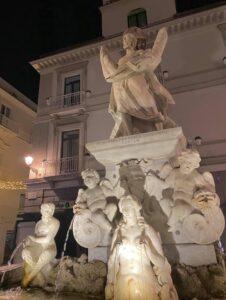 , dedicata al santo, con al centro la sua figura contornata da angeli e divinità marine alle quali è possibile dissetarsi con le fontanelle create sui lati. Realizzata in stile barocco nel 1760, inizialmente collocata di fronte al duomo e solo successivamente, all’inizio del Novecento, spostata sul lato della piazza.
, dedicata al santo, con al centro la sua figura contornata da angeli e divinità marine alle quali è possibile dissetarsi con le fontanelle create sui lati. Realizzata in stile barocco nel 1760, inizialmente collocata di fronte al duomo e solo successivamente, all’inizio del Novecento, spostata sul lato della piazza.
Chiostro del Paradiso e Basilica del Crocifisso
Imponente e scenografica la scalinata composta da 62 scalini che dalla piazza sale fino ad un atrio porticato retto da colonne in marmo da cui voltandosi si può godere di una prospettiva unica sulla cittadina di Amalfi: le case, i bar, i ristoranti. Al centro del porticato troviamo l’ingresso alla cattedrale con le sue porte di bronzo fuse a Costantinopoli nel 1060 e il portale marmoreo, risalente all’VIII sec., con figure antropomorfiche e motivi geometrico-floreali “ad otto” di arte longobarda. Per assaporare in modo completo l’atmosfera che si respira in questa chiesa, vi suggerisco anche una visita al Chiostro del Paradiso e la Basilica del Crocifisso, la cattedrale più antica della città.
Piazza dei Dogi
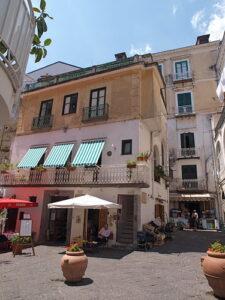
Opposta alla Cattedrale troviamo un’altra importante piazzetta della storica repubblica, attraverso un vicolo molto caratteristico sul lato sinistro di Piazza Duomo si raggiunge la pizzetta ‘dei Dogi‘, storica piazza in cui esistevano ben 5 chiesette oggi inglobate nelle abitazioni dei cittadini e le principali botteghe dei fabbri Amalfitani che accedevano agli Arsenali per le riparazioni delle imbarcazioni.
Rione Vagliendola
Lasciamo Piazza dei Dogi e da una vicolo laterale, ci dirigiamo ad uno dei rioni più antichi della città, custode delle case nobili della Repubblica del XII secolo e da cui è possibile godere di uno degli scorci più illustrati di Amalfi. Il Rione Vagliendola  non deve assolutamente mancare in un elenco su cosa vedere ad Amalfi in un giorno. Seguendo un vicolo fatto da stretti archi e tanti scalini attraversiamo il cuore della città, tanto che in alcuni punti si passa stentatamente in due, raggiungiamo questo agglomerato di case che sfociano su un sentiero, oggi lastricato, che conduce alla chiesetta di San Biagio, inoltre, proseguendo, è possibile raggiungere l’ex Convento dei Cappuccini ora rinomato albergo 5 stelle lusso.
non deve assolutamente mancare in un elenco su cosa vedere ad Amalfi in un giorno. Seguendo un vicolo fatto da stretti archi e tanti scalini attraversiamo il cuore della città, tanto che in alcuni punti si passa stentatamente in due, raggiungiamo questo agglomerato di case che sfociano su un sentiero, oggi lastricato, che conduce alla chiesetta di San Biagio, inoltre, proseguendo, è possibile raggiungere l’ex Convento dei Cappuccini ora rinomato albergo 5 stelle lusso.
Valle dei Mulini e Valle delle Ferriere
Torniamo indietro dal Rione Vagliendola e lasciando la piazza principale alle nostre spalle ci incamminiamo per il caratteristico corso principale di Amalfi. In 5 minuti di camminata leggera arriviamo a Valle dei Mulini, 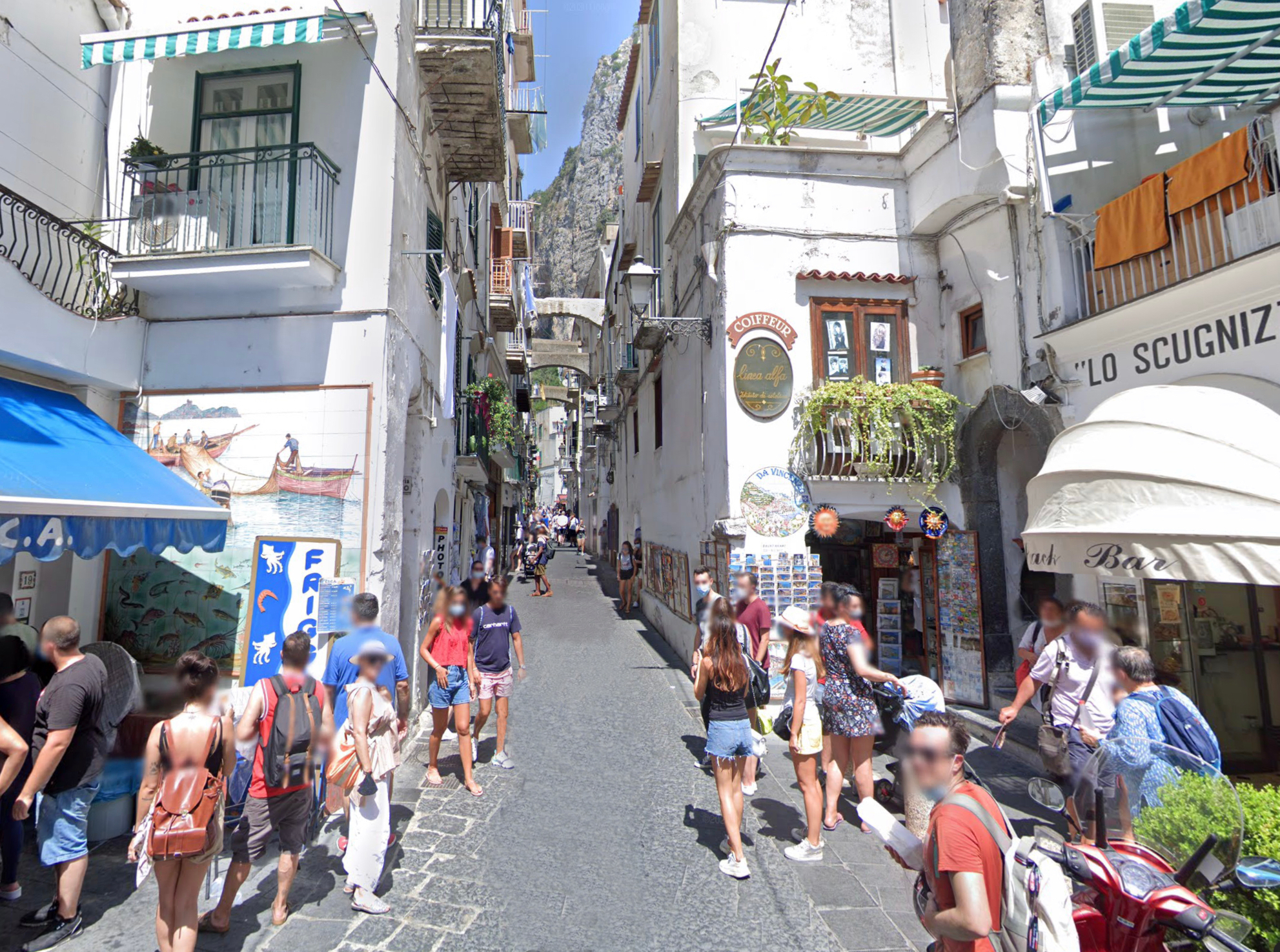 passando sotto un arco sormontato da case tutt’intorno troviamo l’interessante Museo della carta di Amalfi che conserva al suo interno macchinari e attrezzature utilizzati nell’antica cartiera per realizzare la carta a mano. La visita dura una ventina di minuti, quanto basta per lasciarsi affascinare dall’arte della fabbricazione della carta di Amalfi. Usciamo dal museo e proseguiamo fino a raggiungere i confini della città dove la Valle delle Ferriere si apre in uno scenario unico di verde e sentieri che procedono in una gola che si inerpica fino alla montagna. La valle è un’esperienza stupenda per gli amanti del trekking, il sentiero è parte della riserva naturale dei Monti Lattari e attraversa boschi, ruscelli, antichi mulini diroccati di origine medievale nei quali si produceva la famosa carta di Amalfi e la antica ferriera che riforniva di ferro Amalfi da cui prende il nome la valle. Il microclima della stretta gola ha permesso anche la conservazione di una rara felce, la Woodwardia radicans, esempio di pianta del periodo pre-glaciale.
passando sotto un arco sormontato da case tutt’intorno troviamo l’interessante Museo della carta di Amalfi che conserva al suo interno macchinari e attrezzature utilizzati nell’antica cartiera per realizzare la carta a mano. La visita dura una ventina di minuti, quanto basta per lasciarsi affascinare dall’arte della fabbricazione della carta di Amalfi. Usciamo dal museo e proseguiamo fino a raggiungere i confini della città dove la Valle delle Ferriere si apre in uno scenario unico di verde e sentieri che procedono in una gola che si inerpica fino alla montagna. La valle è un’esperienza stupenda per gli amanti del trekking, il sentiero è parte della riserva naturale dei Monti Lattari e attraversa boschi, ruscelli, antichi mulini diroccati di origine medievale nei quali si produceva la famosa carta di Amalfi e la antica ferriera che riforniva di ferro Amalfi da cui prende il nome la valle. Il microclima della stretta gola ha permesso anche la conservazione di una rara felce, la Woodwardia radicans, esempio di pianta del periodo pre-glaciale.
Lungomare dei Cavalieri
Terminata la passeggiata tra i vicoli e le piazzette di Amalfi, possiamo tornare verso la Piazza da cui siamo partiti,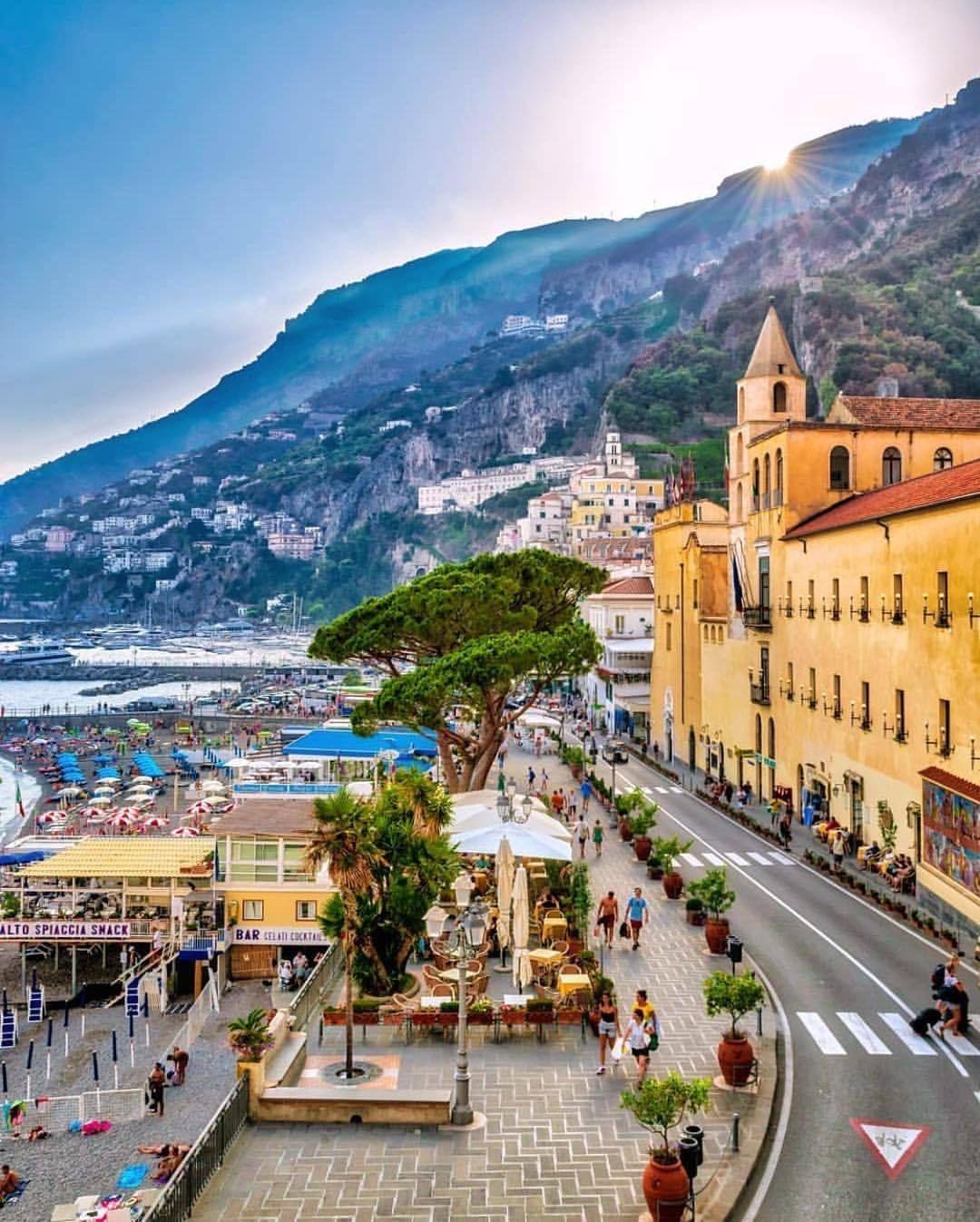 Piazza Flavio Gioia e proseguire la giornata a contatto con il mare, l’anima più verace di questa città con il quale, da Repubblica Marinara quale fu, ha sempre avuto un legame strettissimo. Per farlo potreste raggiungere il vicino Lungomare dei Cavalieri oppure fare due passi sul pontile vicino alla piazza da cui si può ammirare Amalfi in tutta la sua bellezza!
Piazza Flavio Gioia e proseguire la giornata a contatto con il mare, l’anima più verace di questa città con il quale, da Repubblica Marinara quale fu, ha sempre avuto un legame strettissimo. Per farlo potreste raggiungere il vicino Lungomare dei Cavalieri oppure fare due passi sul pontile vicino alla piazza da cui si può ammirare Amalfi in tutta la sua bellezza!









 Ciao, mi chiamo Andrea. Come posso aiutarti?
Ciao, mi chiamo Andrea. Come posso aiutarti?